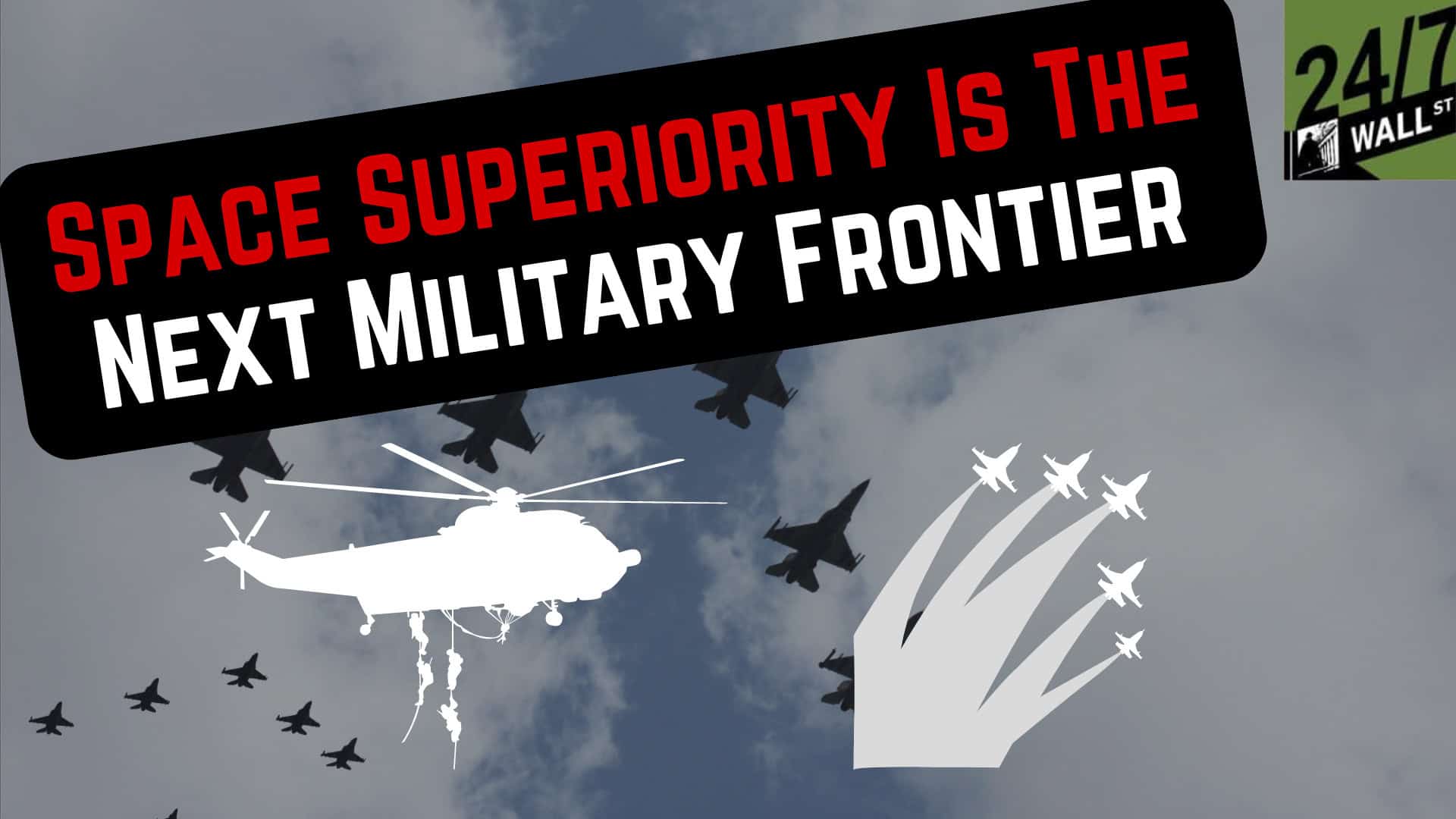
This post may contain links from our sponsors and affiliates, and Flywheel Publishing may receive
compensation for actions taken through them.
compensation for actions taken through them.
Key Points:
- Space Force, created in 2019, protects orbital assets and secures information flow.
- Its goal is “space superiority,” like air superiority but in space.
- It primarily uses unmanned tech for remote, non-direct combat roles.
- Also: start your retirement plan today!
Watch the Video
Edited Video Transcript:
to what we’re talking about, the future of warfare in today’s episode.
One of the newest features of warfare and armed combat and armed services is the Space Force.
And there’s some confusion among people, Space Force versus Air Force.
Where do they differ?
Where are they similar?
Can you tell us a little bit about how these two organizational entities compare?
Sure.
I mean, it’s a really interesting comparison to make in the first place because they’re both the newest uh separate branches
and their origin stories kind of overlap interestingly because you know the um the air force was for all intents and purposes its own branch for much longer than
um then when it became officially a separate branch in so in world war ii it was the united states army air force
And the Air Force itself wasn’t created until in until in but it was acting almost entirely independently in that conflict.
Similarly, the Space Force has operated for much longer than people might realize.
The idea of what we call space superiority is something that’s been brought up since the nineteen fifties.
In fact, it even predates the very first satellites going into space.
It was an air force.
There’s a lot of overlap between the Air Force and the Space Force.
And if I remember correctly, it was an Air Force officer, a general named Bernard Schreifer.
It’s kind of like, if you will, the father of the Space Force.
So he described this is before Russia even launched one satellite into space, said that that in the long haul, our safety as a nation may depend on achieving space superiority.
And that proved very pressing.
He said, several decades from now, the important battles may not be at sea or air, but in space.
that it’s vital to America’s national security interests to have this supremacy in space.
So what do we mean by space superiority?
Well, it’s comparable to air superiority in the sense that control of a certain space.
So for air superiority, that’s, you know, control of the skies above a combat zone, freedom to launch operations unhindered.
So the Space Force isn’t literal, isn’t, you know, space superiority isn’t literal a case of two spaceships fighting or whatever, you know, we’re a long way from anything like that.
But it’s more of an information.
It’s more information warfare.
So the exponential growth of orbital assets that are vital to economic and security interests for all nations in the world.
So the space for space superiority would be maintaining control of your own flow of information while denying it to an adversary.
So at the moment, its posture is largely defensive.
Members of the Space Force are referred to as guardians.
They are protecting orbital assets and trying to deny use to adversaries.
the um as we’re just talking about the origin so the idea of a separate branch of the space force has been discussed for decades
um but I think probably the most serious discussion before it was created came in uh with the rumsfeld commission
um which pointed to a future need um for a separate branch but they concluded at the time there wasn’t the budget or the technology wasn’t at a level where it was viable
but they said in some sort of point in the future and then we’ve seen an explosion in the growth of the so-called space economy and the need to secure that area has led to further discussions.
Then in twenty nineteen, the decision was made and it had broad bipartisan support.
There was some opposition skepticism to create a separate branch.
But prior to that, in all its different forms, the Space Force operated under the Air Force’s umbrella and they still refer to the Air Force as their sister branch.
And most of the personnel that established the Space Force were transfers from the Air Force.
Some were recruited directly and came from other branches.
But they’re very interconnected in what they do.
And now I want to pause there for a minute.
We’re talking a little bit about the different dynamics of warfare.
And one of the interesting things about this branch, it’s almost de facto or default unmanned.
This is going to be the first military branch where, and I mean, you know, in deployment rather, you know, because it is orbitable by nature.
So this has this interesting dynamic of, you know, probably being critically important, but not actually deploying, you know, true soldiers in the traditional sense.
Sure.
Get Ready To Retire (Sponsored)
Start by taking a quick retirement quiz from SmartAsset that will match you with up to 3 financial advisors that serve your area and beyond in 5 minutes, or less.
Each advisor has been vetted by SmartAsset and is held to a fiduciary standard to act in your best interests.
Here’s how it works:
1. Answer SmartAsset advisor match quiz
2. Review your pre-screened matches at your leisure. Check out the advisors’ profiles.
3. Speak with advisors at no cost to you. Have an introductory call on the phone or introduction in person and choose whom to work with in the future
Thank you for reading! Have some feedback for us?
Contact the 24/7 Wall St. editorial team.
